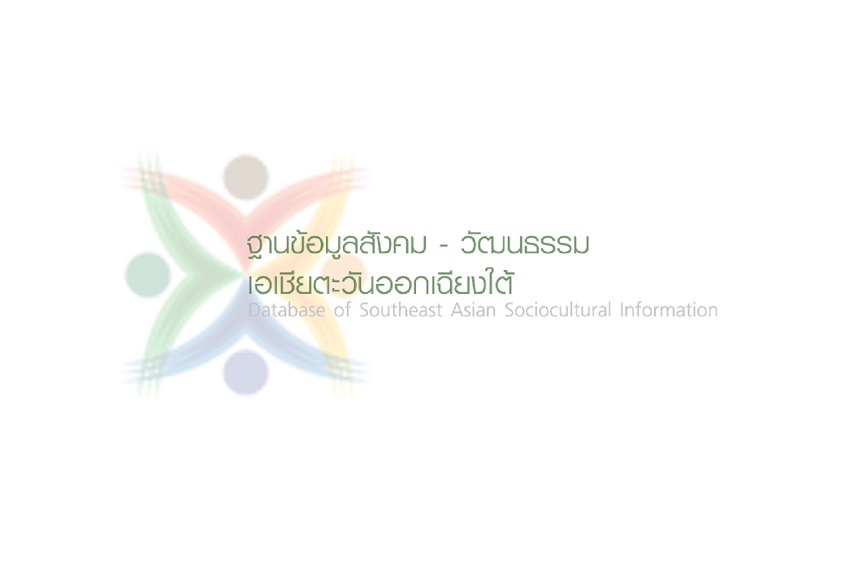สิงคโปร์ - บรรณนิทัศน์
เอเชียตะวันออกเฉียงใต้ : การเมือง เศรษฐกิจและการต่างประเทศหลังวิกฤตเศรษฐกิจ (พ.ศ.2540 – 2550)
โดย รศ.ดร.สีดา สอนศรี และคณะ
งานศึกษาเล่มนี้กล่าวถึงปัจจัยที่เป็นสาเหตุของการเกิดวิกฤตเศรษฐกิจในภูมิภาคเอเชียตะวันออกเฉียงใต้ในขณะที่บางประเทศ เช่น สิงคโปร์สามารถก้าวผ่านปัญหาและอุปสรรคในช่วงเวลาดังกล่าวมาได้ โดยในบทของประเทศสิงคโปร์นั้น ผู้เขียนได้ระบุว่าในปี 2000 รัฐบาลประกาศนโยบายด้านเศรษฐกิจว่าจะมีการปฏิรูปประเทศให้เกิดเป็นระบบเศรษฐกิจบนพื้นฐานของความรู้ (Knowledge-based economy)
ระบบบริหารงานราชการของสาธารณรัฐสิงคโปร์
โดย โครงการสื่อสารการเรียนรู้ “อาเซียน กูรู” สถาบันพัฒนาข้าราชการพลเรือน
คณะผู้จัดทำมีแนวคิดเพื่อเสริมสร้างทักษะความรู้แก่ข้าราชการไทย เพื่อเรียนรู้และเข้าใจระบบการบริหารงานภาครัฐของประเทศต่างๆ ในภูมิภาคอาเซียน ซึ่งคาดว่าจะก่อให้เกิดการประสานงานที่ส่งเสริมความสัมพันธ์อันดีของประเทศในภูมิภาค
สิงคโปร์ เสือธุรกิจแห่งอาเซียน
โดย ถนอมศักดิ์ จิรายุสวัสดิ์
มุมมองของผู้เขียนต่อประเทศสิงคโปร์ให้ความสำคัญด้านเศรษฐกิจ โดยกล่าวถึงการพัฒนาประเทศเพื่อรองรับความเปลี่ยนแปลงที่จะเกิดขึ้นภายหลังการเปิดประชาคมเศรษฐกิจอาเซียน และแสดงความคิดเห็นว่าสิงคโปร์เป็นประเทศที่มีจุดแข็งและมีความพร้อมมากที่สุดจนทำให้เป็นประเทศที่มีความแข็งแกร่งด้านเศรษฐกิจเป็นอันดับที่ 3 ของโลก อย่างไรก็ตาม ข้อสังเกตที่ผู้เขียนแนะนำเมื่อไทยจะสร้างตนเองให้มีพื้นที่ในเขตเศรษฐกิจสิงคโปร์คือ การพัฒนาโครงสร้างพื้นฐานโดยเฉพาะการสร้างโครงข่ายด้านโลจิสติกส์เพื่อรองรับการขยายตัวในอนาคตนั่นเอง
เปิดหน้าต่างอาเซียน สิงคโปร์ (Singapore)
โดย กมลรัตน์ ศีลประเสริฐ
จุดเด่นของหนังสือเล่มนี้ คือการประมวลลำดับเหตุการณ์และสถานการณ์ปัจจุบันของประเทศสิงคโปร์ตั้งแต่อดีตจนถึงปัจจุบันได้อย่างดี รวมถึงการเข้าถึงข้อมูลและวิถีชีวิตของประชากรสิงคโปร์ผ่านความเข้าใจด้านศิลปวัฒนธรรม ด้านอาหาร เครื่องแต่งกาย และอื่นๆ ทั้งนี้ หนังสือเล่มนี้สามารถส่งเสริมให้ผู้ที่ไม่มีความรู้พื้นฐานเกี่ยวกับประเทศสิงคโปร์ได้ทำความเข้าใจกับประเทศนี้ได้ง่ายขึ้นนั่นเอง
The Politics of Nation Building and Citizenship in Singapore
Hill, Michael and Lian, Kwen Fee
The theme of nation building is explored with emphasis on how the creation of a national identity, through building new institutions, has been a central feature of political and social life in Singapore. Education has been of great importance, specifically a system of multilingual education that is part of a broader government strategy of multiculturalism and multiracialism, which has served the purpose of building a new national identity. Other areas covered by the authors include family planning, housing policy, the creation of parapolitical structures and the importance of shared ‘Asian values’ amongst Singapore’s citizens. The book offers a sociological account of nation building which is distinct from prevailing Western models as well as from routes taken by other post-colonial states.
Beyond Gender: The Impact of Age, Ethnicity, Nationality and Economic Growth on Women in the Singapore Economy
Linda Y. C. Lim
This paper uses Singapore Labour Force and Census data to examine trends in women’s labour force participation, sectoral and occupational distribution, and wage incomes relative to men, including by age-cohort and educational attainment. It finds that between 1980 and 2010, gender disparities in virtually all categories have substantially narrowed, and concludes that those which remain—such as women’s continued under-representation at higher levels of the labour force and income distribution--result from their continued disproportionate responsibility for family care. The paper identifies some areas of concern for women’s economic future in Singapore, including the impacts of ageing, foreign labour and immigration, and the wage stagnation experienced by low-income families under Singapore’s economic development model.
Ambitions of a global city: arts, culture and creative economy in ‘Post-Crisis’ Singapore
Lily Kong
This paper chronicles some of the key policies pertaining to the arts and culture in postindependent Singapore. A brief summary is first provided of the early (1960s and 1970s) cultural policy focusing on the harnessing of arts and culture for nation-building purposes, followed by the subsequent (1980s) recognition that the arts and culture had tourist dollar potential. The paper then expands on the cultural/creative economy policy of the 2000s, in which arts, heritage, media and design are recognized for their economic value (beyond their role in tourism to include their export value and their importance in attracting global workers). The paper then turns to the most recent policy attention paid to the social value of the arts and culture. The more broadly ‘cultural social policy’ direction emphasizes the value and integral place of the arts and culture in everyday lives. This is in part in recognition of the fact that for Singapore to be a truly global city, there must be a lively arts and culture scene and high levels of participation by residents. Finally, the promises and challenges that Singapore faces in its efforts to realize its ambitions as a global (cultural) city are discussed.
Singapore’s competitiveness as a global city: development strategy, institutions and business environment
Loo-Lee Sima, Seow-Eng Onga, Adeesh Agarwala, Ali Parsab, Ramin Keivanib
With globalization, cities are facing increasing competitions as centers for activities and nodes for multi-national corporations. As a result, cities have to ensure that their institutional structures cater to the rising demand from such corporations. There is an increasing need for institutional thickness and free market systems. In the past four decades, Singapore, an investment driven city, has provided businesses with a secure and efficient business environment. Through semi-structured interviews with senior policy makers and private experts, this research identifies the institutional framework in Singapore and how this set up interacts with and influences the business environment and city development. However, the need to elevate itself into a knowledge based economy requires a more nimble and fluid relationship between the institutions and the businesses.
Renaissance Revisited: Singapore as a ‘Global City for the Arts’
T.C. Chang
Singapore is renowned as a global business and financial centre, an international hub of air and sea transport, and Asia's leading convention city. In the new millennium, the government has envisioned a new role for the city-state as a ‘Renaissance City’ and ‘Global City for the Arts’. This vision is premised on Singapore becoming an investment base for leading arts, cultural and entertainment enterprises in the region, the theatre hub of Southeast Asia, and an entertainment destination for tourists. This article examines the challenges and accomplishments in Singapore's quest to be a Renaissance City. Drawing on literature on ‘global cities’ and concepts relating to ‘globalization’ and ‘localization’, it argues that the key challenge facing Singapore is how best to ‘go global’ and ‘stay local’ at the same time. Developing a Renaissance City entails a balancing act between globalizing local sensibilities on the one hand, while localizing global best-practices on the other. This global-local nexus can be approached in three ways: (1) by striking a balance between the economic and humanistic objectives of the arts; (2) by importing world-class arts talents and exporting home-grown skills; and (3) by globalizing local peculiarities in line with best practices from around the world. The need to balance global standards with local interests is not easily achieved, however, making Singapore's ‘Global City for the Arts’ vision one of its most ambitious goals to date.
Fifty Years of Development in the Singapore Economy: An Introductory Review
Linda Y. C. Lim
The papers in this volume provide a retrospective analysis of Singapore's economic development during the past 50 years, from the perspectives of different policy domains. This introductory review highlights common themes among the papers, chiefly the primacy of economic growth in driving social as well as economic policies, the interconnection between different policy arenas, the persistence of a particular development model despite sharp changes in policy direction, and the dominant role of the state. The authors collectively conclude that economic policy was both innovative and effective in the first two to three decades of independence, particularly in simultaneously delivering on both rapid economic growth and improved social welfare. In more recent decades, economic growth and social welfare for a significant minority of residents have begun to diverge. Looking ahead, there appears to be a consensus that slower GDP growth, higher productivity, a relative shift from manufacturing to services and from a global to a regional market orientation, and more vibrant and innovative local private entrepreneurs, are necessary for continued economic development. There is also consensus that public policy must pay greater attention to directly meeting the growing social needs of the population, especially the poor, low-income, elderly and other vulnerable groups.
Asianism and the Politics of Regional Consciousness in Singapore
Leong Yew
Responding to the challenges Singapore faces in coming to terms with its Asian identity, this book examines the complex cultural, social, and political underpinnings that have shaped Singapore’s mainstream discourse on Asia. Indeed, it argues that its legacy as a colonial port city, the exigencies of managing the post-independence nation state, and the larger forces of imperialism and capitalism all contribute to its politics of Asianism. Taking a thoroughly interdisciplinary approach that spans history, cultural studies, postcolonialism, and cultural geography, Leong Yew reveals how Asia has been used to narrate Singapore’s beginnings, revalidate Singaporean ethnic culture and to consolidate its practices of consumption and commodification.
This book will be welcomed by students and scholars working across a range of fields, including Asian culture and society, Asian politics, cultural theory and postcolonial studies.
50 Years of Social Issues in Singapore
David Chan (Editor)
The social context of Singapore is changing rapidly, and understanding how people think, feel and behave in various situations has become a key driver of effectiveness in addressing social issues. 50 Years of Social Issues in Singapore provides a comprehensive review and examination of various social issues at multiple levels of analysis including the individual, group and society.
This invaluable book adopts a translational approach to social issues in Singapore by explicitly bridging intellectual and practical perspectives. Contributed by a distinguished team of authors, the chapters examine the critical ideas underlying public debates of social issues and their policy and practical implications.
The book is organized into three parts. Part I examines issues of population and social fundamentals in Singapore such as ageing, marriage, urban planning, healthcare and racial and religious harmony. Part II analyses Singapore's social progress through issues of inclusivity such as social mobility, developing communities and marginal groups that deserve more attention. Part III focuses on core principles and social processes related to social justice, doing good, social media and approaches to understanding and addressing social issues in Singapore.
Most importantly, the chapters in this book clearly identify many of the critical, unresolved and emerging questions on various social issues that will guide the next generation of public discussion and policy deliberations on what matter in Singapore.
งานวิจัย
John Gershman, “Is Southeast Asia the Second front? ,”Foreign Affairs,Vol.81,No.4(Jul-Aug.,2002):60-74 ชี้ให้เห็นรูปแบบความสัมพันธ์ระหว่างสหรัฐอเมริกากับรัฐในภูมิภาคเอเชียตะวันออกเฉียงใต้ก่อนและหลังเหตุการณ์ 9/11 เสนอวิธีการจัดการปัญหาก่อการร้ายที่สอดคล้องกับเงื่อนไขทางการเมืองและเศรษฐกิจในภูมิภาคเอเชียตะวันออกเฉียงใต้ไว้ 5 ประการ คือ ประการแรก สหรัฐอเมริกาควรส่งเสริมพัฒนาความอ่อนแอเชิงสถาบันให้เข้มแข็งขึ้นและพัฒนากลไกความร่วมมือด้านความมั่นคงระดับภูมิภาค ประการที่สอง สหรัฐอเมริกาควรสนับสนุนการพัฒนาประชาธิปไตย เช่น การสนับสนุนให้สร้างกลไกด้านมนุษยชนภายในประเทศ ประการที่สาม สหรัฐอเมริกาควรสนับสนุนการจัดการที่เป็นระบบของรัฐบาลของแต่ละประเทศ เช่น การกระจายอำนาจภายในท้องถิ่น เพื่อลดบทบาทของกลุ่มกบฏต่างๆ ในท้องที่นั้น ประการที่สี่ การจัดการกับปัญหาความยากจนและความไม่เท่าเทียมภายในพื้นที่ต่างๆ เพื่อลดความไม่พอใจของประชาชนและสกัดกั้นการเข้าร่วมของประชาชนกับกลุ่มกบฎ และประการสุดท้ายสหรัฐอเมริกาควรสนับสนุนให้เกิดความร่วมมือในระดับภูมิภาคทั้งในด้าน เศรษฐกิจ การเมืองและสังคมอีกด้วย
งานวิจัยที่แสดงให้เห็นลักษณะและแนวนโยบายต่างประเทศของสิงคโปร์ได้อย่างชัดเจน ได้แก่ งานของ Michael Leifer,Singapore’s Foreign Policy Coping with Vulnerablility (New York:Routledge,2000) และ Kawin Wilairat,Singpore Foreign Policy(Singapore:ISEAS,1975 เสนอการต่างประเทศด้านความมั่นคงตั้งแต่ช่วงเวลาที่สิงคโปรก่อตั้งสาธารณรัฐใหม่ในปี ค.ศ. 1965 จนถึงศตวรรษที่ 21 ซึ่งสามารถแบ่งได้เป็น 4 ยุค ยุคแรก คือ นโยบายต่างประเทศหลังจากสิงคโปร์แยกตัวออกจากมาเลเซีย ในปี ค.ศ. 1965-1975 ยุคที่สอง คือ นโยบายต่างประเทศ: การริเริ่มความร่วมมือในระดับภูมิภาค ยุคที่สาม คือ นโยบายต่างประเทศในช่วงทศวรรษที่ 1980:ถ่วงดุลมหาอำนาจ และยุคที่สี่ คือ การขับเคลื่อนความร่วมมือในภูมิภาค:สนับสนุนความร่วมมือพหุภาคี





